#chiss art
Explore tagged Tumblr posts
Text

Hi thrawn tumblr
#thrawn#grand admiral thrawn#star wars#star wars rebels#illustration#leyendecker study#chiss#chiss art#thrawn art
5K notes
·
View notes
Text

Night art with Admiral Ma'kro and the First Syndic of the Mitth's Family - Thalias.
Later I will tell you more about their roles in the "Eleventh Fleet AU", but for now will just drop a little spicy art of this duet.

#star wars#eleventh fleet au#au#thalias#samakro#thrawn ascendancy#ufsa'mak'ro#mitth'ali'astov#chiss#chiss ascendancy#chiss expansionary defense fleet#first syndic thalias#admiral ma'kro#thalias turned out so beautiful - like it so much >v<#and samakro... I was most worried about him#samakro x thalias#liked their relationship in the book - they were just made for each other ahahaha#thrawn books#thrawn#chiss art#digital#art#my art#netmors#comics#fantasy#illustartion#star wars rebels#ahsoka series#mitth
438 notes
·
View notes
Text
A guide to chiss fashion
Alright, it’s finally done. I’ve managed to compile my headcanons in a format I’m more or less happy with so say hello to the chiss fashion guide. As I’ve said before, this is a homage to my love for fashion history and fashion illustration books so it’s written in the same(ish) kind of style, with made-up history and trivia behind it.
Mind you this isn’t about what your regular civilians wear – I can’t even begin to imagine what the spectrum of current fashion looks like for a species spread over multiple planets, that’s too much of a tall order.
Instead I’ll talk about what I imagine as ‘standard traditional wear’. A kind of traditional ensemble for formal occasions which is also the accepted dress code for the upper ruling classes and administration. The books give us many indications of how hung up the chiss are on rank so I imagine their fashion reflects that accordingly, with dress codes and etiquette and whatnot.
So without further ado, let’s start with structure.

The typical traditional ensemble consists of: underwear (plus any additional thermal underlayers), an underrobe, outerwrap robe, jacket (optional, mostly decorative) and top robe or coat (not pictured) for more severe weather and outdoor activities.
First we have the underwear layer (1) with a wraparound robe which can be long or short depending on the season, breeches and any other additional thermal layers underneath.
Next comes the underrobe (2) with a high buttoned collar and fitted sleeves. A slit starts at around chest level and ends in the usual overlap pattern at the ankles. This hem is often embroidered and is meant to be visible under the outerwrap robe.
This robe is also what I imagine is used as lounge wear at home (sometimes accompanied by a lounge robe) or as an outer layer in warmer climates and casual settings, though it’s usually decorated with accessories to make up for how plain it is. Some underrobes, especially padded styles for colder weather, have a waist string to pull excess material in in preparation for the layers to come.
Underrobes for low ranking administration are traditionally red, symbolizing specific qualities, but more on color symbolism later.
Then we have the outerwrap robe (3) with its flared bottom and sleeves which are also typically decorated. The outermost edge of the hem is important here because that’s where the trim that shows family allegiance goes.
These robes are closed with a pair of strings (usually at waist level but may be higher or lower depending on current trends) and the kind of knot used varies depending on social standing and occupation, again, a reflection of how classist the chiss are in my mind. For lower class administration, in case the knot is obscured by a decorative item (like a jacket or scarf), the item is required to have strings of its own where the knot can be duplicated.

The next part of the outfit is the jacket (4) which also varies in style depending on the wearer’s rank. A popular style for low ranking administrators is a waist or thigh level boxy cut with rectangular sleeves that don’t cover the embroidered hems of the robe under it.
Jackets can have individual trims and even small lapels. Structured shoulders and wide lapels are inappropriate as they’re reserved for upper level Aristocra.
Despite their popularity, these jackets aren’t a practical item since their cut provides little insulation and they prevent the use of garments like top robes and coats. Because of this they are either meant to be taken off or worn with cloak-like outer layers outdoors.
Fashion, especially that of the high class, is rarely all practical so I think it’s neat to include elements that are less functional and more so trendy, decorative or appropriate.
This goes in the opposite direction as well and I imagine there being plenty of modern modifications like hidden zippers for easier donning and a variety of false hems, cuffs and collars to minimize layering, making the outfits more functional.
As long as the overall silhouette and main elements are retained, the outfit is considered appropriate though more formal events are usually attended in proper full traditional wear.
Next we have accessories.

The most common ways to accessorize in traditional ensembles are scarves, jewelry, fans, and a variety of trims. Scarves are normally worn between layers and can be used to cover up the open hole at the neck in colder settings. The long sleeves make bracelets impractical but earrings and necklaces are hugely popular. Handheld fans are also a stylish way to elevate the outfit and different kinds of trims like feather and fur are used in less formal settings.
With all that in mind a complete outfit ends up looking something like (5).
Moving on to Syndics:


(traditional silhouette and some images of syndics to show the range of variety available to them)
With Syndics we start to see the appearance of structured shoulders (a strictly upper class element) and more extravagant lapels, particularly in jackets. Still no structured collars however as these are reserved for Patriarchs. Jackets, in contrast to those worn by lower ranking administrators, are longer and made of soft, flowing fabrics like silk, with the goal being to show off expensive materials and dyes (hence rich colors and light silky textures).
Proper etiquette regarding underrobes and outerwrap robes remains the same with one exception being the waist knot: higher ranking syndics aren’t required to replicate the knot if it’s covered by an overgarment or accessory (a syndic’s status is obvious from other elements of their outfit).
In general Syndics are the echelon with the most freedom when it comes to their fashion. With the exception of some traditional elements, there’s more room for variation in accessories, cuts and combinations: Low ranking Administrators need to follow a stricter dress code while Patriarchs are limited by the need to project a certain image so you see the most variety in the fashion of Syndics, the only exception being extremely formal events and ceremonies where the traditional silhouette is a must.

(Syndic Zistalmu with a more personalized interpretation of the traditional structured shoulders.)
And finally, there’s Patriarchs.
Patriarchs, in my mind, have the strictest and most elaborate dress code. Their outfits retain the most traditional elements so they’re like a walking museum piece in, sometimes literally because many of the pieces they wear are hereditary and come from famous artisans.
With Patriarchs we see floor-length jackets, very wide lapels, often with opulent linings like patterned velvet, structured collars (attached to the jacket separately), decorative skirts, silk undergarments and elaborate headwear. In addition, their outerwrap robes fasten with two twin knots rather than one.

Most if not all of these elements are strictly reserved for Patriarchs so they’re instantly recognizable.
The jackets are both long-sleeved and sleeveless depending on how lavish the robe underneath is and the wearer’s desire to show it off.
The separately attached collars are distinct and were originally meant to demonstrate proper posture, fitting best when the wearer was standing or sitting upright. Their rigidity and restrictiveness has decreased over time but they still serve to highlight the wearer’s stance.
The collars are the only element I think I’m willing to allow for Patriels as well, albeit I imagine them a bit more understated. I’m still in two minds about the rest.
For Patriarchs, the top of the white underwear robe is also visible above the underrobe collar – normally underwear garments are supposed to be concealed but these robes were given tall necklines to prevent chafing to the neck from the structured collars worn on top. In order to do that they were made from fine silk which eventually became a status symbol, both because of the expensive material and the fact that they were used in combination with structured collars and nowadays the high collar of the robe is visible at the neck.
The overskirt (pictured above and fastened with strings) is the most traditional element of the ensemble. It’s become obscure in other ranks and is distinctive as a result. The pleating is meant to demonstrate an abundance of fabric, usually heavy patterned or embroidered velvets, and I imagine these pieces to be especially heavy. Its only purpose is for layering and decoration.
Somewhat counterintuitively, Patriarch robes have less lavish lower hems (absent the usual flared shape and no trailing fabrics) to allow for ease of movement and compensate for the extra weight added by the rest of a Partiarch’s accessories. And when I say these outfits are heavy, I mean heavy.
Ceremonial robes in particular are notoriously a nightmare to wear and require practice and a good bit of stamina.

(ceremonial robes)
In terms of curiosities, the Stybla are an interesting case both because their Patriarch is allowed to wear ruling family regalia despite not being one of the nine and because they preserve some older elements in their garments from the time they were the only ruling family. Like the gold pin with their family crest, attached to the lapel. The curled hair style and ‘sun’ style headpiece are also elements that go in and out of Patriarch fashion but the Stybla stick to them because that’s the style that was prevalent in their heyday.
All of this is for the purpose of projecting the image of an innocuous quaint old family that still clings to its ‘faded’ glory.
Now for headdresses. There’s three main styles of headdress, labelled ‘moon, ‘planet’ and ‘sun’ accordingly. The main circular elements are meant to display family crests and can have various additional accessories attached to them like chains and ornaments.

I imagine there used to be more styles, at one point as many as the ruling families, but in time as fashions shifted they boiled down to the three main ones. These are usually worn with the traditional long hairstyles that all patriarchs conform to and are attached using a system of clips and pins to the topknot at the back.
The hairstyle itself is known as the ‘waterfall’ style, inspired by a classical style of sculpture.
Pictured below is a ceremonial style headpiece which are only worn at the most formal traditional ceremonies.

In general, these headdresses are somewhat unwieldly and unstable if the wearer moves too suddenly. This is again intentional as similarly to the collars restricting posture, it’s meant to restrict movement to ‘slow’ and ‘deliberate’.
And finally we have color symbolism
This is something I imagine as very important for no other reason than it gives me another fun element to play around with so let’s get into it.
In general, a chiss outfit is mainly made up of cool colors and a few warmer highlights though that can sometimes be flipped depending on the wearer’s preference or current trends. Overall there’s a preference for cooler colors and those close to the chiss’ natural coloration (skin and eyes) which also has biological reasoning but more on that later.
Most importantly, colors have culturally established symbolic associations, meaning the wearer can choose qualities they want to emphasize through their choice of color. This is often done through statement pieces to make the choice stand out, such as: eye catching clothing items or accessories, wear frequency, color predomination, etc. Often times the colors don’t reflect the wearer’s true qualities but rather the image they’re trying to project.
Because of the complexity of this system, most Aristocra rely on tailors and stylists to construct their outfits (and by extension public image) for them.
There’s also the so called ‘military colors’ (black and white) which are reserved for the army and navy and are only used as highlights in non-military contexts or by off-duty members of the military:

(General Ba'kif depicted in military colors with Stybla teal, decorative fan and robe trimming)
Colors are divided into ‘cardinal colors’ with long established traditional meaning and secondary ones whose meaning is fluid and depends on current trends. The cardinal color symbols are as follows:
Blue – order, duty, perseverance Red – passion, diligence, honor Purple – firmness, reliability Magenta – innovation, farsightedness, creativity, individuality, self-assurance Green – steadfastness, calm, security Orange – boldness, confrontation, certainty in battle Yellow – vitality, energy, enthusiasm Black – stability White – prestige, perfection, glory
(In chiss culture, light blue is a separate color from dark blue. The blue referred to here is what is commonly referred to as dark blue.)
Sometimes colors can be divorced from traditional meanings like when they’re used to denote family allegiance or as secondary colors meant to just compliment a palette. The color symbolism system is also all but irrelevant for the general public where trends and personal preferences take priority.
It still carries a lot of weight in the upper classes, however. For example, low ranking administrators are expected to wear red underrobes to symbolize their dedication and diligence.
An example of how colors can be used to make a political statement is Patriarch Thurfian, who upon being promoted to his post adopted a color palette of blue, purple and green to indicate a stable, orderly and traditional rule as opposed to Thooraki’s more maverick politics and preference for warm reds, yellows and magentas.

(Patriarch Thurfian in characteristic blue palette with 'moon' style headdress and purple collar. The jacket is sleeveless, showing off the decoration of the outerwrap robe sleeves.)
Overall, there are many ways to use color to indicate meaning. Warm vibrant colors are in general a bold choice so they’re seen as more of a statement, like for example a bright yellow scarf.
Syndic Thrass favored a bright magenta jacket with wide short-cut sleeves to emphasize his charisma. Zistalmu is an example of a more fashion-forward choice with a predominantly maroon color palette, a secondary color with fluctuating meaning. Colors can also underline subtle family and political allegiances, like Ba’kif wearing teal (a color traditionally associated with the Stybla) as a highlight color off duty.
Lastly, biology also plays a part in color preference, albeit a minor one. (Disclaimer, I’m not a biologist so take this section with a grain of salt.)
Unlike humans, chiss are tetrachromats, meaning they have four types of light-sensitive cone cells in their eyes. In addition to the cones most sensitive to short (blue), medium (green) and long (red) wavelengths, the ones found in humans, they also have ones that respond to the infrared spectrum, giving them their infrared vision.
They also, unlike humans, have a higher number of blue sensitive cones and a very low number of red sensitive ones. This is because even before Csilla’s shift to a cooler climate, the flora and fauna of their world had predominantly blue pigmentation, the same pigment that gives them their skin color, which is the main evolutionary reason for their sensitivity to blue.
This imbalance is somewhat made up for by their infrared receptors, as infrared is next to red on the spectrum, but the low number of red sensitive cones means they’re not as sensitive to shades of orange and yellow.
Despite this, they still use these colors in their wardrobe (albeit less frequently and with less variety) and the rarity itself has contributed to the specialness of their meaning. Red in particular has proved itself an enduring staple because of its presence in the color palette of natural chiss pigmentation.
The rarity of these colors could also explain why they’re assigned traditionally less desirable virtues in the color symbolism system.

(secretary Ronan (Lyron) as I imagine him in my fic, with a red administrator underrobe, embroidered outerwrap robe, and yellow scarf as statement piece accessory.)
I’ve also toyed with the idea that the bioluminescent properties of their eyes interfere with the natural perception of colors (much like a red filter) which has led to an adaptation where the brain filters out the excess light in the red spectrum, making them even less sensitive to different shades of red and its adjacent colors. It’s an adaptation similar to that which allows most species to filter out constant monotonous background noise to aid hearing.
But that’s another thing I’m in two minds about as it complicates things further and I’m not too sure of the biological mechanics of it.
#chiss#chiss art#thrawn#thrawn books#thrawn ascendancy#chiss headcanons#thurfian#mitth'urf'ianico#ba'kif#supreme general ba'kif#zistalmu#brierly ronan#my art
154 notes
·
View notes
Text

Thrawn (totally not judging you).
#thrawn#star wars fanart#he's judging you for your lack of appreciation for his art collection#Mitth'raw'nuruodo#chiss art#thrawn books#pixel artist#pixel animation#pixel art#artists on tumblr#my art <3
156 notes
·
View notes
Text
I'm still alive....here I drop here one sweet Chiss man ... Thrass🥰
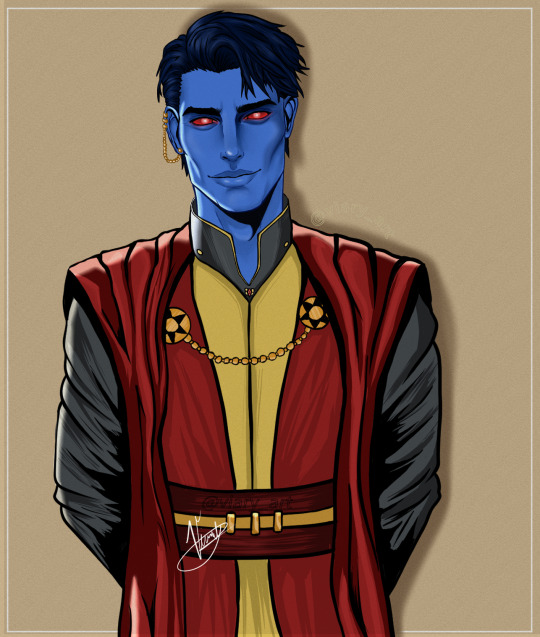
#chiss ascendancy#chiss expansionary defense fleet#star wars fanart#star wars#star wars art#star wars chiss#my art#my artwork#thrawn ascendancy#thrass#syndic mitth'ras'safis#mitth'ras'safis#chiss art#chiss#outbound flight thrass#star wars: thrawn ascendancy#lesser evil#the sweetest Chiss among Chiss#Thrass
150 notes
·
View notes
Text
A day late but
Let’s just all appreciate the fact that Thrawn would probably be very confused on April Fools Day
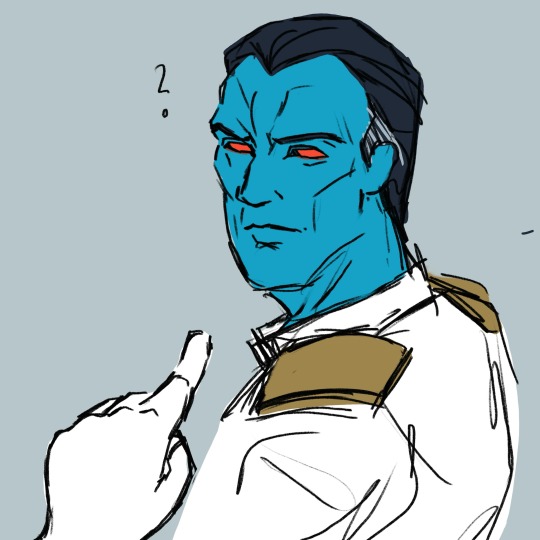
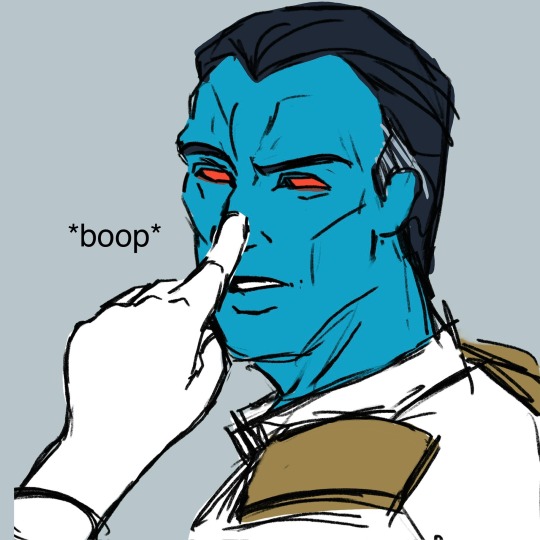

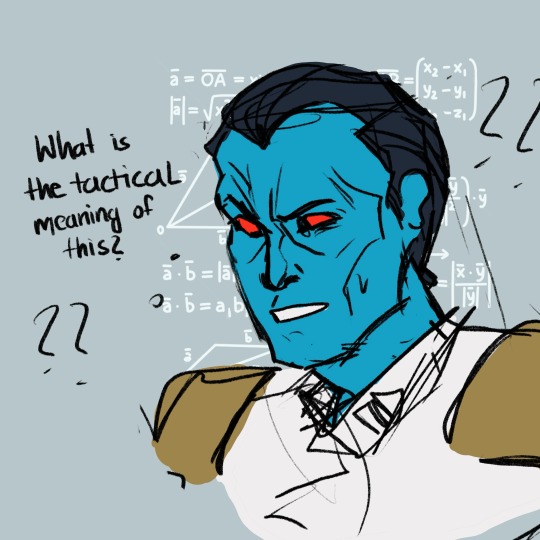
boop.
#boop#april fool's day#star wars#star wars fanart#thrawn#grand admiral thrawn#thrawn fanart#chiss art#chiss ascendancy#star wars art#star wars shitpost
421 notes
·
View notes
Text

I gave Thrass Saganu's outfit because I like it
#thrawn#starwars fanart#star wars#thrawn books#grand admiral thrawn#mitth'ras'safis#mitth'raw'nuruodo#chiss art#thrass#my art
272 notes
·
View notes
Text

Different types of glowing red eyes for Chiss art part 1. Which do you like best? I know pupils are controversial and people have very strong opinions for/against them. The next ones will have more "glow."
#glowing red eyes#chiss ascendancy#star wars chiss#eye art#thrawn#thrass#grand admiral thrawn#star wars thrawn#thrawn trilogy#ar'alani#admiral ar'alani#mitthaliastov#mitth'ali'astov#mitth'ras'safis#mitth'raw'nuruodo#che'ri#glowing eyes#red eyes#blue skin#frost giant loki#chiss art#thurfian#thrawn thursday#watercolor eyes
118 notes
·
View notes
Text
I need to give her a hug and then maybe kiss her on the nose aaaaaa
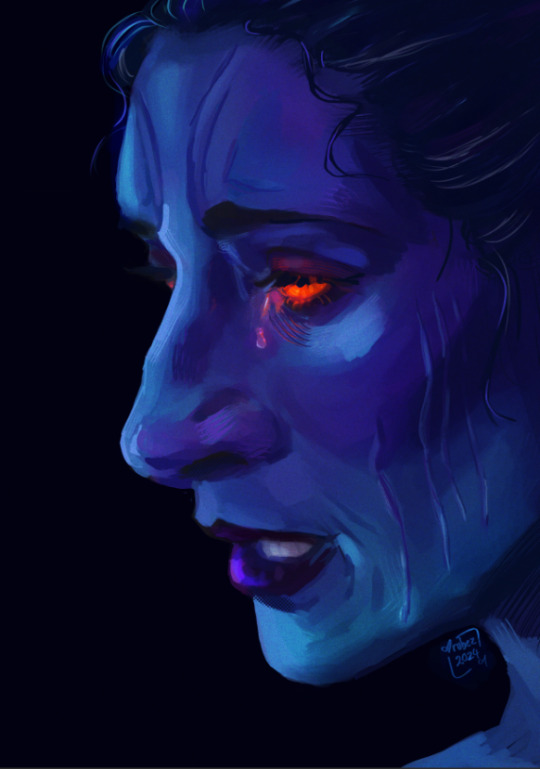
Post-Treason Ar'alani, perhaps? Idk but the scars turned out so nice and so did the tears.
Stickers here Prints here
283 notes
·
View notes
Text


Second commission I've made 🫣
Ngl I'm proud of it.
#chiss art#chiss oc#chiss#swtor oc#swtor#commission#jedi oc#swoc#swtor jedi knight#myartstyle#swtor art#sw#game: swtor#not my oc
171 notes
·
View notes
Text

local blueberry gripping her lightsaber as if her whole life depends on it (it does) just a lil colored sketch of my oc Pryia
#oc: Kashp'ryi'azere#my art#my oc#art#star wars#chiss#jedi#star wars the old republic#trans oc#swtor#star wars art#star wars oc#swtor oc#chiss art#chiss oc#jedi knight#artwork#colored sketch#clip studio art#art on tumblr#original character#fan character#own character#artist on tumblr#yamikuruku
146 notes
·
View notes
Text
Cheli or something like that

#eli vanto#eli vanto fanart#eli star wars#thrawn au#thrawn 2017#grand admiral thrawn#thrawn#mitth'raw'nuruodo#thrawn trilogy#chiss ascendancy#chiss art#star wars chiss#chiss#eli as a chiss?
96 notes
·
View notes
Text





chiss illustrations finally here! we've got Thurfian, Ba'kif, Zistalmu, Ronan (as I imagine him in my fic) and Lamiov in that order
these took a while to figure out but I'm happy with the result
#thrawn#thrawn ascendancy#thrawn books#chiss#ba'kif#thurfian#brierly ronan#zistalmu#lamiov#supreme general ba'kif#mitth'urf'ianico#irizi'stal'mustro#thrawn treason#chiss art#chiss ascendancy#my art
186 notes
·
View notes
Text

decided to make a new portrait of my imperial agent Clarr'ah'nirdi or simply Rahn ~
#swtor#chiss#swtor imperial agent#imperial agent#swtor chiss#chiss agent#chiss ascendancy#swtor oc#chiss oc#chiss art
60 notes
·
View notes
Text

Some random doodle of grumpy Captain Samakro🥰😁

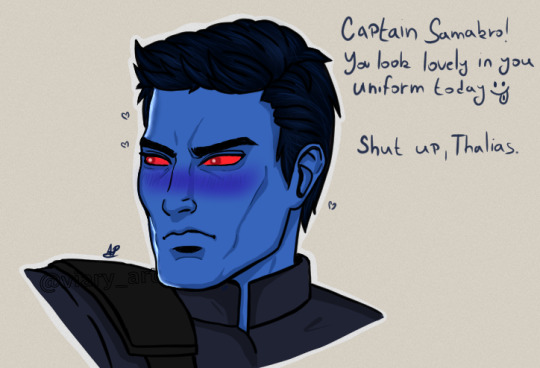

#chiss ascendancy#chiss expansionary defense fleet#star wars#thrawn ascendancy#star wars chiss#star wars fanart#my art#chiss#chiss art#samakro#ufsa’mak’ro#chaos rising#lesser evil#greater good#thrawn trilogy#grand admiral thrawn
111 notes
·
View notes
Note
am i completely remembering this wrong or didn't you do a stunning borika piece?????? i can't seem to find it but i think she was wearing pink/purple and the lighting was absolutely gorgeous 😍😍😍
i did do a Borika piece! I never posted it on tumblr but yeah it was a gift for my friend Mac!
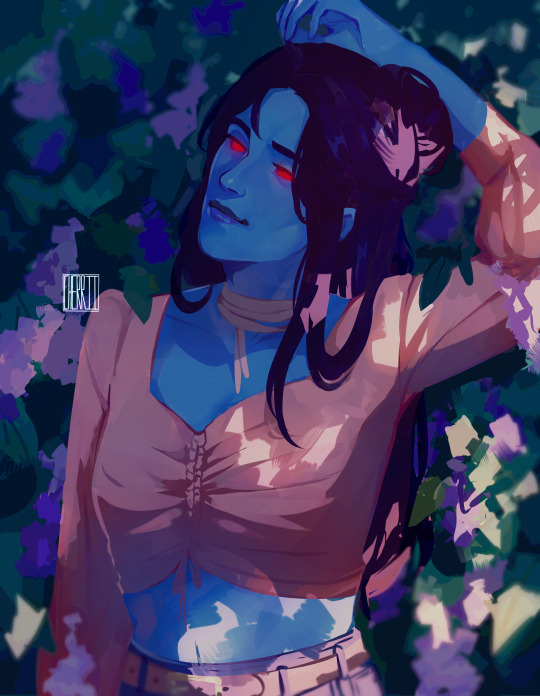
552 notes
·
View notes